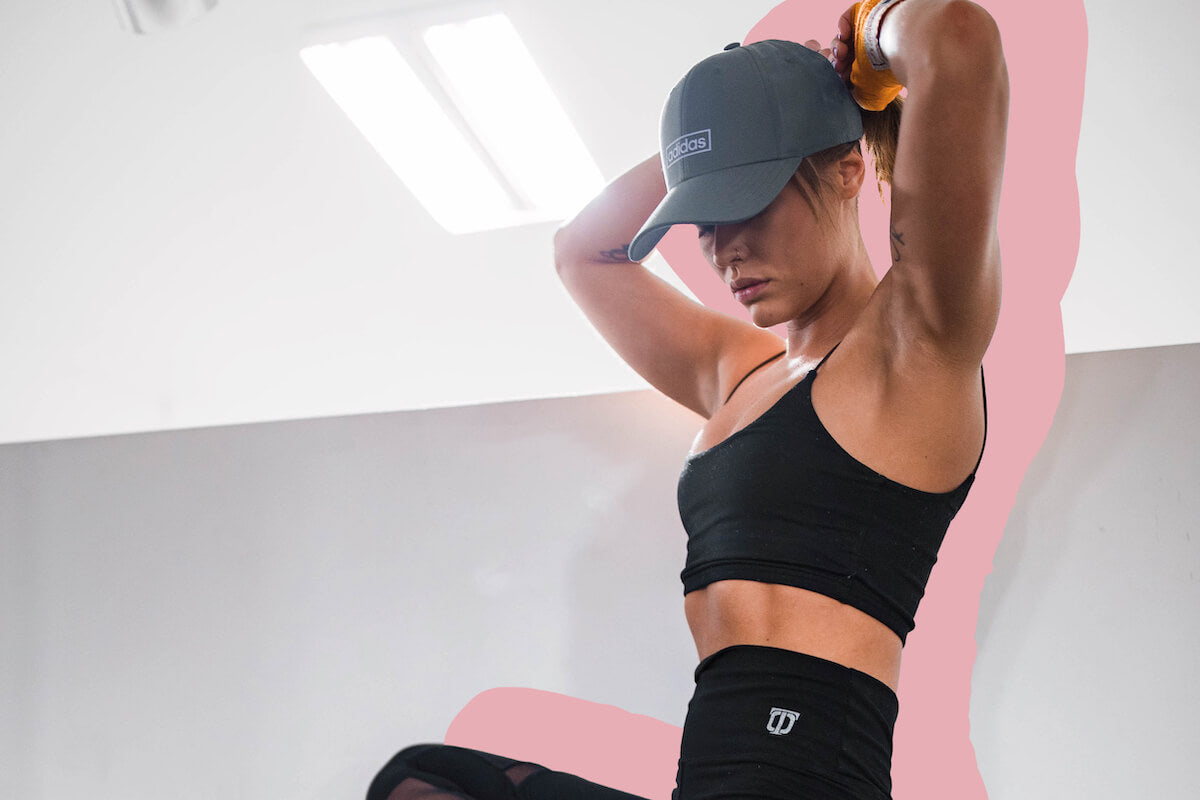Let’s get the definition out the way. DOMS, or Delayed Onset Muscle Soreness, refers to the delayed pain that begins around twenty-four to forty-eight hours after exercising. It’s also sometimes referred to as ‘muscle fever’, and it’s that aching sensation that commonly happens after a particularly brutal session at the gym, or after trying out a new exercise. It's very common (87% of our recent quiz takers said they feel some kind of post-exercise soreness at least occasionally), so if it's happening to you, don't worry!

Bizarrely – a lot of people actually enjoy experiencing DOMS, stating that the ache is reflective of a kind of accomplishment from a really great workout. No pain no gain and all that.
Whilst that’s all well and good, and we know that delayed onset muscle soreness is most likely just the result of temporary muscle inflammation, how can we tell the difference between simple muscle soreness after exercise, or implication of an injury? I guess what we’re asking is, is DOMS good? Is pain after exercise just something we should come to accept?
You know what’s next…
Is it an injury, or delayed onset muscle soreness?
One important area to mention is the difference between injury and DOMS. If you’re unsure, you will never experience delayed onset muscle soreness during a workout. The clue is in the name… delayed.
We’re sure we don’t have to tell you this, but just in case and to keep all bases covered – if you’re experiencing aches and pains during a workout, it’s really important to stop what you’re doing.
Whilst you may think you’re doing yourself a favour by working through the pain, the only thing you’re doing is putting yourself at risk of more injury.
Cool. Now we’ve got the Motherly advice out the way, into the science…
The science of delayed onset muscle soreness
Annoyingly – it seems that researcher’s can’t really come to a single decision when it comes to what specifically causes DOMS. We know that people frequently complain about DOMS after that all-important leg day, but we’ve also heard from people that have taken a little break from the gym that when getting back into it, they experience DOMS too.
From this we can determine that DOMS isn’t exclusive to any particular muscle group, which is definitely a step in the right direction. There’s one common denominator here – and that’s muscle tissue, so what’s happening to it when we work out? Is it something we’re doing wrong?
To put it simply: no.
Biologically, when we work out, we are causing fibre damage from muscle strain. This is how muscles shape and grow, but this strain is definitely exacerbated when we engage in unfamiliar exercises, so we can also concur that it’s definitely exercise induced. Detective Innermost at your service.
To investigate this further, researchers conducted MRI scans on individuals experiencing DOMS, finding no significant muscle damage. Further research has assessed the impact of different exercises and the subsequent outcome of DOMS, discovering that exercises that restrict blood flow (BFR) have a significantly higher chance of resulting in an experience of DOMS.
So, if you’re likely to be climbing a lot of stairs a couple of days after a leg day (perhaps you’ve got a romantic trip up the Eiffel Tower booked), maybe steer away from any heavy BFR training. Those 1665 steps are pretty unforgiving at the best of times.
Is it safe to workout with muscle soreness after exercise?
Although we advise not to push yourself too hard, the bottom line is that working out with DOMS is completely fine.
You may experience some soreness during your warmup – and if you’ve ever thought about skipping your warm up, now is definitely not the time. The key is to ease yourself into a workout if you’re experiencing delayed onset muscle soreness, to avoid any injury so if you're working through DOMS, your warmup is about to be your best friend.
You may even find that the soreness subsides during your workout – but just be careful.
Can I take supplements to reduce DOMS?
We thought you’d never ask! It wouldn’t be an Innermost article without talk of a good supplement, and this is no different.
Taking The Recover Capsules is a great way to reduce inflammation caused through exercise, regulate hormone activity and get you back on track ASAP.
Aside from The Recover Capsules, if you’re suffering from DOMS – firstly, don’t worry. Your symptoms will subside in a day or two, just take it easy. Secondly, upping the levels of Omega 3 in your diet will ease your recovery, due to the high levels of anti-inflammatories found in Omega 3 containing foods and Omega 3 supplements.
References
- Heiss, R., Kellermann, M., Swoboda, B., Grim, C., Lutter, C., May, M. S., & Hotfiel, T. (2018). Effect of compression garments on the development of delayed-onset muscle soreness: a multimodal approach using contrast-enhanced ultrasound and acoustic radiation force impulse elastography. journal of orthopaedic & sports physical therapy, 48(11), 887-894. Click here.
- Umbel, J.D., Hoffman, R.L., Dearth, D.J. et al. (2009). Delayed-onset muscle soreness induced by low-load blood flow-restricted exercise. Eur J Appl Physiology. 107, 687. Click here.
- Wall, R., Ross, R. P., Fitzgerald, G. F., & Stanton, C. (2010). Fatty acids from fish: the anti-inflammatory potential of long-chain omega-3 fatty acids. Nutrition reviews, 68(5), 280-289.Click here.


















